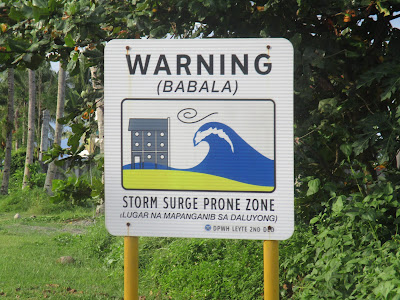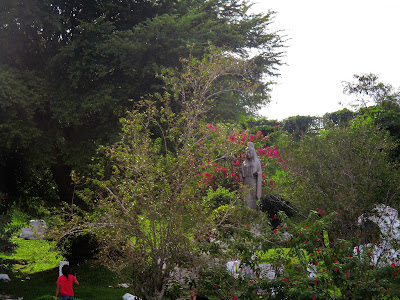STORM SURGES FROM TYPHOONS TACLOBAN PHILIPPINES
Storm Surges from Typhoons in the
Philippines
Introduction
A storm surge a coastal flood associated with typhoons.
There are different things that effect the severity of the storm surge. These
can include the shallowness and the orientation of the body of water to the
storm path. There is more science involved but a typhoon with strong winds
simply pushes the water to the shore and causes flooding.
Large waves are formed by the strong winds. As these waves
break, the water moving towards a beach may exceed twice the wave height before
the wave actually breaks.
As these waves break, the water particles moving toward the shore have
considerable momentum and may run up a sloping beach to an elevation above the
mean water line which may exceed twice the wave height before breaking.
Typhoon Yolanda (International
name Haiyan) was one of the largest storms to make land fall in history. The
storm surge in the Tacloban area was huge. The size of the storm surge was not
anticipated which reached heights of 6 meters or in imperial 20 feet. Thousands
died and many were just washed away in the raging water and debris.
Many perished in shelters that
one would think were safe. Driving from the Dulag area to Tacloban my family
explains where the water levels reached in the Tolosa,Tanauin and Palo. It is
hard to believe the water came so far inland from the sea. On this journey you
pass a number of mass grave Memorial Sites. The feeling is one of tragedy and
sadness.
It appears no matter how you
prepare for your safety, the fury and power of Mother Nature can be
underestimated. Driving between Dulag and Tacloban you will come across signs
near storm surge danger areas.
A PICTURE CAN SAY A THOUSAND
WORDS
Storm Surge
in the Dulag Area during Typhoon Yolanda
The storm surge in the Dulag
area did not appear to be as severe as in other areas. I took photo graphs of a
place in Luan a barangay a few km away from Dulag town proper five days after
Typhoon Yolanda. The people who own this small beach resort evacuated inland
which saved their lives.
I estimate the normal slope of
the beach to be approximately two meters. I ask the owners how deep the water
was once the wave reached flat land. They estimated approximately another two
meters. The water from the storm surge progressed a few hundred meters inland.
PICTURE TAKEN 5 DAYS AFTER TYPHOON YOLANDA
PICTURE OF THE SAME BEACH SIDE RESORT AUGUST 2017
Tacloban and
surrounding areas face the Pacific Ocean where many typhoons develop. This is
also part of life in many parts of the Philippines. Nature and scenery in this
part of the world is so beautiful.
All people
must be on alert when typhoon warnings are given and take the necessary precautions
to protect life. Also important is to respect Mother Nature and the potential
power that can be released.
If you wish
you can follow me on Twitter and Goggle Plus. If you have any questions about Tacloban
and surrounding areas please do not hesitate to contact me.
References
Have a Great
Day
Robbie in
Tacloban






Comments
Post a Comment